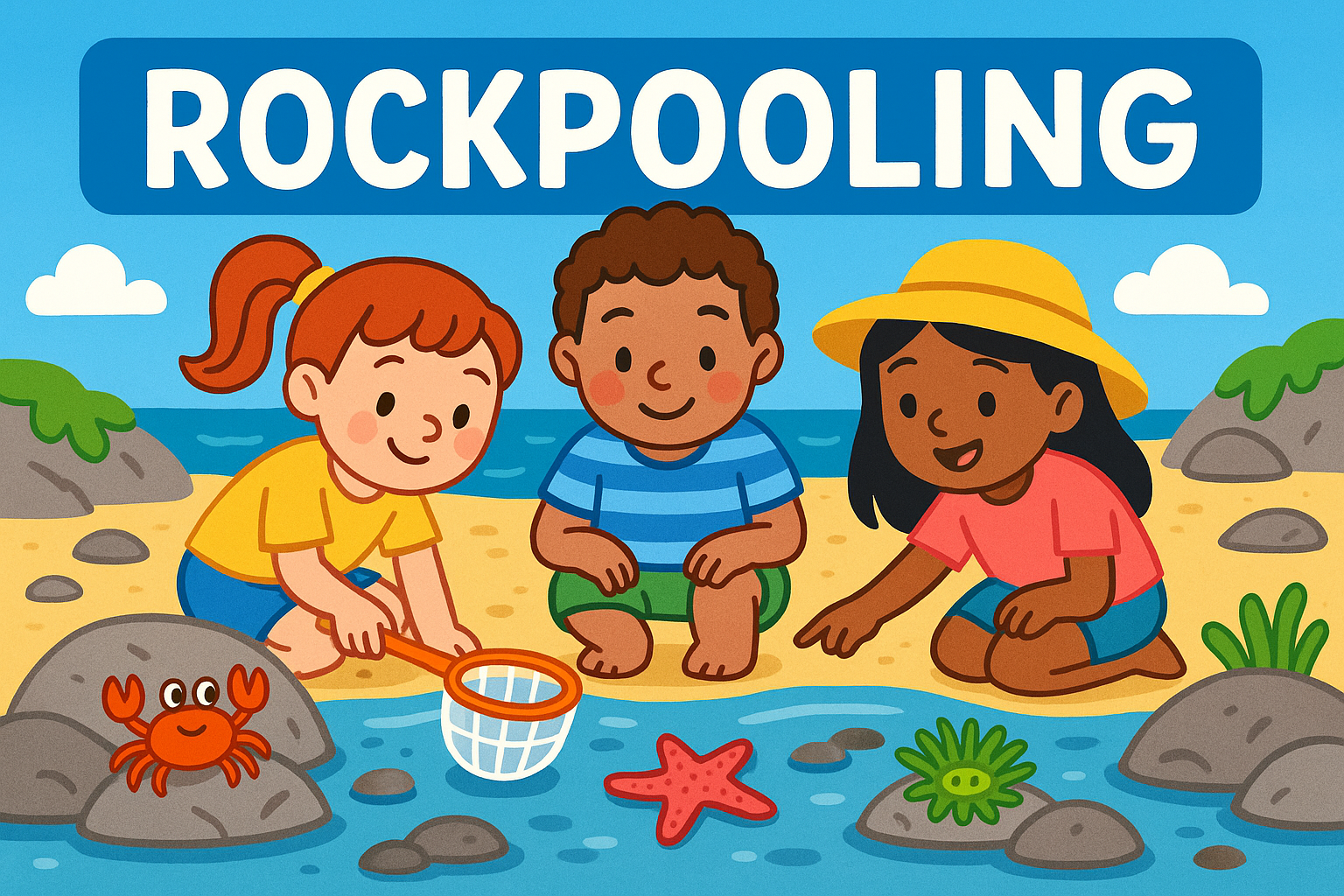Rockpooling is a magical way for children to discover the fascinating marine world up close.
As the tide goes out, small pools of seawater are left behind in rocky areas, offering the chance to spot tiny crabs, limpets, sea anemones, fish, starfish and other coastal creatures.
All you need is curiosity (and maybe a bucket or magnifying glass), and a willingness to tread gently as you explore. It’s a great way to encourage appreciation for nature, introduce marine science, and enjoy slow, mindful discovery time by the sea.
Materials
- Small bucket or container (optional)
- Net (optional, use gently and sparingly)
- Magnifying glass
- Wellies or beach shoes
- Waterproofs or layers, depending on weather
Tools
- None
Steps
- Visit a beach with rocky areas and known rockpools — check tide times and aim for low tide.
- Walk slowly and carefully, looking into the pools without disturbing the creatures.
- Use a magnifying glass to get a closer look at small animals, shells and algae.
- If using a net or bucket, always return animals to where they came from gently and promptly.
- Chat about what you find — try identifying creatures or simply enjoy observing them.
Variations
- Creature Count: How many different animals or colours can be spotted?
- Sketch It: Bring a notebook to draw some of your favourite finds.
- Mini Marine Journal: Keep a log of different rockpool creatures you see on different beach visits.
Why It’s Great
- Builds Respect for Nature – Encourages gentle interaction and care for living things.
- Sparks Curiosity – Inspires questions and early science exploration.
- Mindful Outdoor Play – Combines movement with focused observation and calm exploration.
Safety Tips
- Always supervise near water and rocks — surfaces may be slippery.
- Check tide times and avoid getting caught as the water comes in.
- Handle sea creatures gently, and return them quickly to their original spot.
- Wash hands after exploring, especially before eating.


Leave a Reply